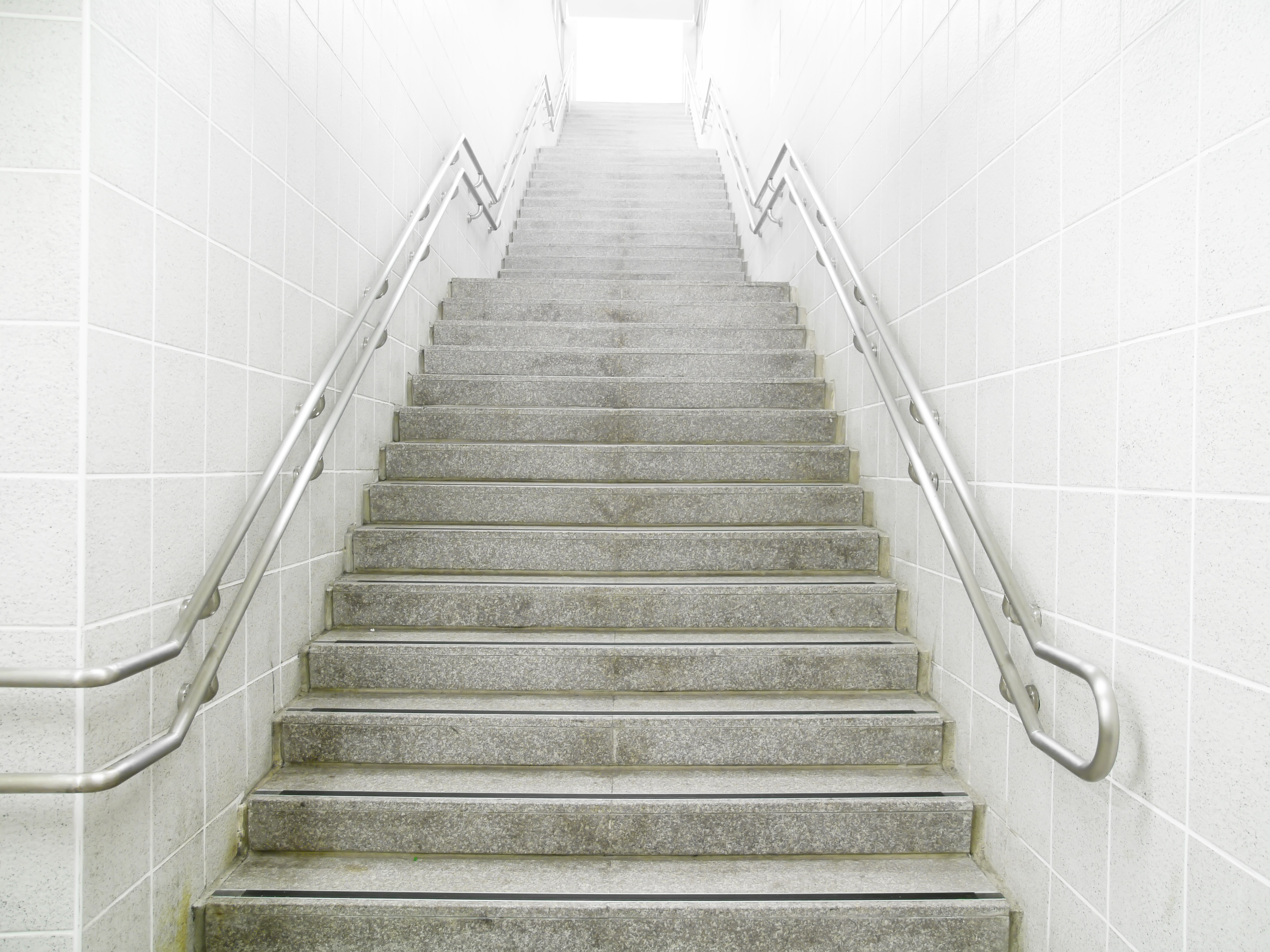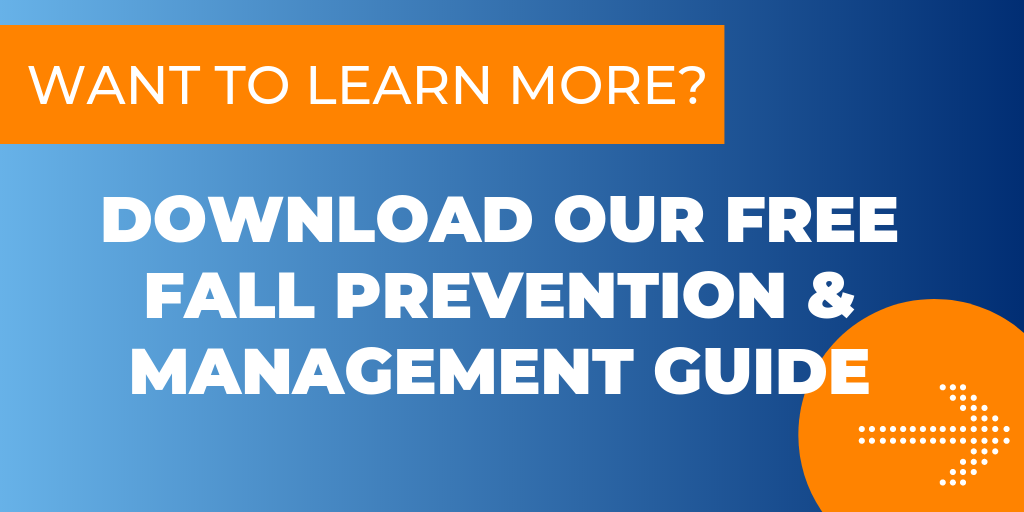Fall prevention tips for healthcare facilities
Slips, trips and falls are risks at every business. In fact, falls are the third leading cause of unintentional injury-related death in the United States. Given the startling statistic that one in four Americans aged 65+ falls each year, working with seniors increases your organization's fall exposures.
Without a fall prevention program in place, you could be putting your residents, employees, visitors, vendors and any other person who comes to your facility in danger.
The emotional and financial costs of a fall
Slips, trips and falls can result in severe injuries, including hip fractures, broken bones, head injuries and even death. Beyond the unfortunate impacts to the client, it's important to remember that the fall alone can be costly. The average hospital cost for a fall injury is over $30,000, and the costs of treating fall injuries rise with age.
There are also possible legal ramifications of a fall. “Slip and fall” is a term used for a personal injury case in which a person slips, trips and falls, and is injured on someone else’s property. These cases usually fall under the broader category of cases known as “premises liability” claims. These incidents occur on a property (or “premises”) owned or maintained by someone else, and the owner or possessor of the property may be held legally responsible.
This doesn't even begin to consider possible reputation damage which could have a long-lasting impact on your client-base and employee recruitment.
Caregiver retention could also be impacted by falls. Many professional caregivers already face challenges like burnout and guilt — and a fall could worsen the load. Caregivers report a significant increase in caregiver burden, fear of falling and depression after a client experiences a fall.
It's important to take precautions including proactively developing risk management plans and selecting thorough insurance coverages to help reduce falls and help protect your organization against financial burdens that an accident could place.
What puts a client at risk for a fall?
There are both extrinsic and intrinsic risk factors that could increase a client's risk of falling. "Extrinsic" refers to external factors, for example if a floor is wet and a resident slips and falls. "Intrinsic" refers to the individual psychical/internal/psychological characteristics of each client like age, muscle and strength weakness, chronic disease and other health-related characteristics that may increase their chances of falling.
Extrinsic risk factors include:
- Potentially hazardous activities (generally related to the patient’s need to maintain their independence)
- Clutter
- Time of day
- Lighting
- Spills/wet floors
- Loose electrical cords
- Unsecured rugs
Accidents resulting from extrinsic risks typically happen in one of three places:
- Parking lot and surrounding sidewalks
- Entrances and exits
- Indoors
A focus on extrinsic factors. How to help assess your facility's fall risks and make improvements:
To begin to lower your fall risks, your organization should take these 3 steps:
- Have a preventive maintenance program in place to help ensure that all areas are regularly inspected and maintained.
- Educate all staff members on how to identify and report potential hazards to appropriate individuals.
- Implement documentation and procedures to make sure unsafe conditions are reported and fixed immediately.
Here is a quick list of fall-related items to check-off during routine inspections:
On your facility's exterior, check that your:
- Parking lot is in good condition
- Sidewalks are level and obstruction free
- Water drains away from sidewalks/parking areas
- Sidewalks and parking areas are well lit
- Changes in exterior surface levels/elevations are marked
- Stairs and steps have non-slip surfaces
- Stairwells are illuminated, clean and unobstructed
- Handrails are present, tight and in good condition
- Snow and ice is removed; surfaces treated (seasonal only)
On the inside of your facility, check that your:
- Public areas are clean, well lit and unobstructed
- Carpeting is tight, smooth and free of tears and rips
- Doormats are flat, slip-resistant and clean
- Stairwells are illuminated, clean and unobstructed
- Handrails are present, tight and in good condition
- Changes in interior floor level elevation are marked
- Emergency lighting is operational
Falls are 100% preventable. It's important to evaluate your building, grounds and each client to better assess your risks and take precautions. Having a fall assessment program, developing a preventative maintenance program and training your team can help you create a safer environment and a culture of safety.
DISCLAIMER
The information contained in this blog post is intended for educational purposes only and is not intended to replace expert advice in connection with the topics presented. Glatfelter specifically disclaims any liability for any act or omission by any person or entity in connection with the preparation, use or implementation of plans, principles, concepts or information contained in this publication.
Glatfelter does not make any representation or warranty, expressed or implied, with respect to the results obtained by the use, adherence or implementation of the material contained in this publication. The implementation of the plans, principles, concepts or materials contained in this publication is not a guarantee that you will achieve a certain desired result. It is strongly recommended that you consult with a professional advisor, architect or other expert prior to the implementation of plans, principles, concepts or materials contained in this publication.
This blog post may contain the content of third parties and links to third party websites. Third party content and websites are owned and operated by an independent party over which Glatfelter has no control. Glatfelter makes no representation, warranty, or guarantee as to the accuracy, completeness, timeliness or reliability of any third party content. References to third party services, processes, products, or other information does not constitute or imply any endorsement, sponsorship or recommendation by Glatfelter, unless expressly stated otherwise.
Related posts
The challenges that caregivers face are not easy. We compiled some quick tips for managing family interactions in hospice and palliative care settings.
In summer 2024, weather will be unpredictable, but these are the weather events you can expect, depending on location.
There's so much to learn about nursing, but here's 10 fascinating facts as we celebrate National Nurses week.





.png?height=300&name=Glatfelter%20Team%20-%20Blog%20-%20Author%20(1).png)




Submit a Comment